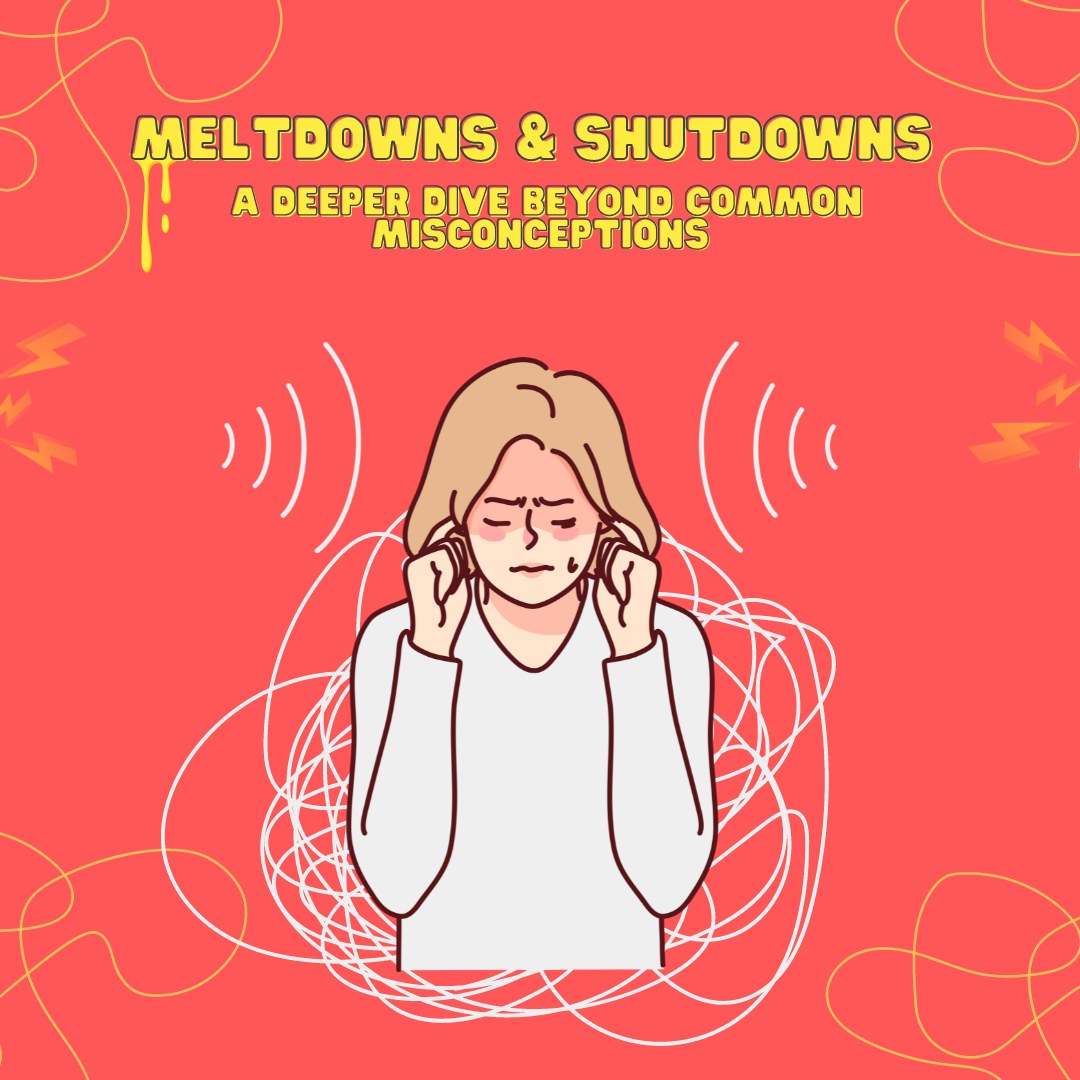
Autism is often misunderstood by the general public. Many of its unique characteristics are often either overlooked or oversimplified. One particular area of interest, and oftentimes confusion, is the concept of meltdowns and shutdowns experienced by those with autism. These are very different from panic attacks or typical temper tantrums.
What is a Meltdown?
A meltdown is an intense response to overwhelming situations. Think of it as an 'overload' of sensory or emotional stimuli, which becomes too much for the individual to handle.
Meltdowns may manifest as:
- Physical behaviors: These can include hitting, kicking, biting, or lashing out.
- Verbal expressions: Intense crying, screaming, or verbal outbursts.
These reactions are involuntary which means the person isn’t purposefully choosing to act this way but is instead reacting to an overwhelming surge of emotions or sensory experiences.
Shutdowns: The Lesser-Known Response
Contrary to meltdowns, shutdowns are inward responses and can be seen as the opposite reaction to sensory or emotional overload. A person in the midst of a shutdown may:
- Withdraw from their environment.
- Become non-responsive or mute.
- Display a lack of emotional or physical reactions.
How are Meltdowns and Shutdowns Different from Panic Attacks?
Panic attacks are sudden periods of intense fear or discomfort that reach a peak within minutes. While there might be some overlaps, such as an increased heart rate or feeling of impending doom, the root causes and manifestations are different:
-
Cause: Panic attacks can be triggered by various factors including stress, fear, or even for no discernible reason, whereas meltdowns and shutdowns often arise from sensory or emotional overstimulation.
-
Reaction: During a panic attack, one may experience shaking, palpitations, shortness of breath, and a strong desire to escape the situation. While meltdowns might exhibit some outwardly similar reactions, the underlying reasons and coping mechanisms differ.
Anticipating a Meltdown
Just like a brewing storm gives signs before its onset, meltdowns often have warning signs. Recognizing these signs early can be crucial in preventing or minimizing the intensity of a meltdown. Some signs might include:
- Increased agitation or restlessness.
- An escalation in stimming behaviors (repetitive motions or sounds).
- Expressions of feeling overwhelmed or stressed.
Knowing the Causes
A deeper understanding of the causes can help caregivers, educators, and peers provide better support. Some common triggers include:
- Sensory Overload: Bright lights, loud noises, or strong smells can overwhelm an autistic individual.
- Unexpected Changes: Autistic individuals often rely on routines. Any sudden deviation can be distressing.
- Communication Difficulties: Not being able to convey feelings or needs can lead to frustration.
Minimizing the Triggers
Awareness and adaptability are key:
- Sensory Adaptations: If you know that a certain environment might be overwhelming, consider earplugs, noise-cancelling headphones, or sunglasses.
- Consistency is Key: Stick to routines when possible. If changes are unavoidable, provide ample heads-up and preparation time.
- Open Communication Channels: Encourage non-verbal communication tools, like picture cards or apps, that can help express needs and feelings.
What to Do if Someone is Having a Meltdown?
When someone is having a meltdown or shutdown do not judge them. Everyone gets overwhelmed and judging them won't help the situation. Show that you care, it makes them feel loved and that someone understands them.
- Stay Calm: Your calmness can help set the tone and avoid further escalation.
- Ensure Safety: Remove any potential hazards from the vicinity and ensure the person's safety.
- Give Space: Sometimes, the best approach is to give the individual some time and space to process and recover.
- Avoid Overwhelming Communication: Keep your language simple. Avoid bombarding them with questions or commands.
- Seek Professional Guidance: If you’re a caregiver or educator, consider seeking training on how to best support during such episodes.
Seeing Through an Autistic Lens
It's essential to understand that autism is a neurological difference in perspective of the world. Sensory experiences that might be mundane or barely noticeable to many can be overwhelming for someone on the autism spectrum. The fluorescent light that hums softly in a supermarket can be a roaring disturbance to an autistic individual.
This difference in perception is not a deficit, but rather a unique way of interacting with the world. Thus, meltdowns and shutdowns are not acts of defiance or manipulative behaviors but responses to an environment that doesn't always align with their sensory needs or processing capabilities.
Sensory Overwhelm & Differences
Every autistic individual is unique. While one might be hypersensitive to sounds, another might be hypo-sensitive to touch. Recognizing these differences is crucial in tailoring support. Sensory safe spaces, often calm and dimly lit, can be a haven for those feeling overwhelmed.
A Universal Understanding
Everyone, at some point or another, feels overwhelmed by the world around them. While the triggers and reactions may vary, the underlying need for understanding, patience, and support remains universal. Whether it's an autistic meltdown, a panic attack, or just a bad day, the essence of human connection lies in extending empathy and care.
For a more inclusive and understanding society, it's crucial that we differentiate between meltdowns, shutdowns, and other mental and emotional reactions like panic attacks. By doing so, we not only avoid mislabeling and misunderstanding autistic individuals, but we also open doors to tailored support and empathy for everyone's unique experience of the world. Let's strive for a world where we recognize the challenges faced by each individual and support them in their unique journey.

